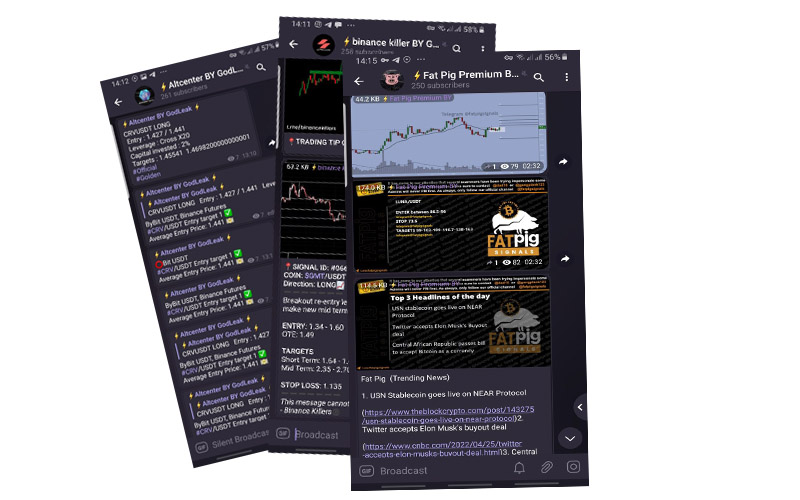How Can I Perform Mobile Crypto Mining?

What is crypto mining?
The process of validating transactions and adding them to a cryptocurrency’s blockchain, or public ledger, is referred to as cryptocurrency mining. A central authority, like a bank, verifies transactions in traditional financial systems. Cryptocurrencies, on the other hand, operate on a decentralized network, and miners—network participants—are responsible for verifying transactions.
To validate and protect transactions, miners use powerful computers or specialized hardware to solve intricate mathematical problems. These problems are intended to be computationally challenging and call for a significant amount of power. The first miner to solve a problem receives a certain amount of cryptocurrency. Miners compete with one another to solve these problems.
Because miners are required to demonstrate that they have carried out a significant amount of computational work in order to find a solution, the process of resolving these issues is referred to as “proof of work.” The verified transactions are added to a block, which is then added to the blockchain, after a miner has solved the issue. The cryptocurrency network’s security and integrity are guaranteed by this procedure.
Mining cryptocurrency necessitates a significant amount of computational power, powerful hardware, and electricity. Bitcoin, for instance, makes use of the resource-intensive mining algorithm SHA-256. As a consequence of this, miners frequently establish mining pools in order to combine their resources and enhance their chances of earning rewards.
What is mobile crypto mining, and how does it work?
The process of mining cryptocurrencies using mobile devices like smartphones or tablets is referred to as “mobile crypto mining.” Due to their high computational power, specialized hardware like ASICs (Application-Specific Integrated Circuits) or powerful graphics cards are frequently utilized in traditional cryptocurrency mining. Mobile devices, on the other hand, have significantly less processing power than these dedicated mining rigs.
Mining cryptocurrencies using less computationally demanding mining algorithms, such as proof of stake or proof of capacity, is typically the focus of mobile crypto mining. These algorithms are suitable for mobile devices with limited processing power because they require fewer computational resources.
Some examples of mobile crypto mining are as follows:
Mining CPUs: Mining with a computer’s central processing unit (CPU) is possible for some cryptocurrencies, particularly those based on CPU-friendly algorithms. Mobile devices can earn rewards for contributing their CPU power to mining blocks. However, due to their limited processing power, mobile CPU mining typically yields low mining rewards.
Mining the Cloud: To mine cryptocurrencies using this strategy, remote data centers’ computing power is utilized. Mobile users can get a portion of the mining rewards based on their investment by renting mining resources from cloud mining providers. Cloud mining permits users to participate in the mining process while removing the requirement for mobile devices to carry out the actual mining.
Mining in the browser: In-browser mining scripts may be used by some websites and mobile apps to mine cryptocurrency using the device’s processing power. Due to its potential impact on user experience and the increased prevalence of ad blockers and anti-mining measures, this method has become less common.
How to mine cryptocurrency on an Android smartphone?
Due to the limitations of mobile devices, such as limited processing power, battery life, and the possibility of device damage, mining cryptocurrency on an Android smartphone is generally not recommended. However, if you still wish to investigate the possibility, the following general procedures can be followed:
Investigate cryptocurrencies: Select a cryptocurrency with a mobile-friendly mining algorithm and that is compatible with mobile devices. Look for cryptocurrencies that use proof-of-stake or other low-power or CPU-friendly algorithms.
Choose a mining program: Find a legitimate mining application that upholds the picked cryptographic money and is viable with Android gadgets. MinerGate, NeoNeonMiner, and Pocket Miner are a few well-known mining applications. To reduce the likelihood of malware or scams, check that the app has a good reputation and has received positive reviews.
Install the application: Download the mining app to your Android phone by going to the app’s official website or the Google Play Store. Follow the provided installation instructions.
Make a wallet by: Install a cryptocurrency wallet to store the coins you’ve mined. You can use third-party wallets that support the chosen cryptocurrency or use the official wallets for many cryptocurrencies. Make sure the information in your wallet is safe.
Setup the mining application: Open the mining app and, if necessary, set it up with the information about your mining pool. You might be able to change the mining settings or select the mining algorithm with some apps. To receive the mined coins, follow the app’s instructions and enter your wallet address.
Begin mining: The mining process can begin once the mining app has been configured. To mine cryptocurrency, the app will make use of your device’s CPU or other available resources. Keep an eye on your device’s temperature and battery level because mining on a mobile device can generate a lot of heat and use a lot of power.
Keep an eye on and cash out earnings: Within the app, monitor your earnings and progress in mining. Before making a withdrawal to your wallet, accumulate enough mined coins because some apps may have a minimum withdrawal threshold.
How to mine cryptocurrency on an iPhone?

There are a number of reasons why mining cryptocurrency on an iPhone is neither feasible nor practical. Apps that mine cryptocurrency directly on iOS devices are explicitly forbidden by Apple’s App Store guidelines. Therefore, there are no legitimate mining apps for iPhone users in the App Store.
Additionally, the mining capabilities of iPhones are limited, even if you manage to locate an alternative method or application outside of the App Store. iPhones lack the computational power necessary to compete with dedicated mining hardware and were not designed for mining. Specialized mining rigs or high-performance computers are better suited for cryptocurrency mining because it requires a lot of processing power.
Get to know Godleak
Godleak crypto signal is a service which provide profitable crypto and forex signals. Godleak tried to provide you signals of best crypto channels in the world.
It means that you don’t need to buy individual crypto signal vip channels that have expensive prices. We bought all for you and provide you the signals with bot on telegram without even a second of delay.

Godleak crypto leak service have multiple advantages in comparision with other services:
- Providing signal of +160 best crypto vip channels in the world
- Using high tech bot to forward signals
- Without even a second of delay
- Joining in +160 separated channels on telegram
- 1 month, 3 months , 6 months and yearly plans
- Also we have trial to test our services before you pay for anything
For joining Godleak and get more information about us only need to follow godleak bot on telegram and can have access to our free vip channels. click on link bellow and press start button to see all features
Join for Free
☟☟☟☟☟
https://t.me/Godleakbot
Also you can check the list of available vip signal channels in the bot. by pressing Channels button.
Is mobile crypto mining profitable?
There are a number of reasons why mobile crypto mining is generally unsuccessful:
Insufficient processing power: When compared to specialized hardware like ASICs or dedicated mining rigs, mobile devices like smartphones and tablets have significantly less computational power. In order to compete effectively, the mining algorithms utilized by numerous cryptocurrencies have become increasingly complex. Mining rewards are reduced because mobile devices are not optimized for mining and cannot generate a significant amount of hash power.
Energy conservation: Mining requires a lot of time and resources, which mobile devices are not made for. The mining procedure consumes more energy because it requires a significant amount of computational power. When mining on mobile devices, the potential rewards often outweigh the high electricity costs and rapid battery drain that can occur.
Constraints on cooling: Mobile devices lack the robust cooling systems of dedicated mining rigs because mining generates a lot of heat. Overheating and possible damage to the mobile device can result from a lack of appropriate cooling mechanisms.
Changing the mining algorithm: In order to maintain network efficiency and security, cryptocurrencies frequently update their mining algorithms. The profitability of mobile mining apps and methods may suffer as a result of these algorithm changes, as may their compatibility with new algorithms.
a rise in competition: The mining space is profoundly cutthroat, with enormous scope mining activities and particular equipment overwhelming the field. With these powerful mining setups, mobile devices cannot compete effectively, reducing chances of earning mining rewards.
The future of mobile crypto mining
Although the development of mobile crypto mining may be influenced by a number of factors, its future remains uncertain:
Hardware advancements include: The processing power, energy efficiency, and cooling capabilities of mobile devices continue to rise. It may become easier to mine cryptocurrencies on smartphones and tablets as their power increases. Their mining capabilities could also be enhanced by the development of mobile-specific mining chips or modules.
Algorithms and cryptocurrencies in development: Algorithms that use fewer resources and are better suited to mobile devices may be used in the creation of new cryptocurrencies that are designed with mobile mining in mind. Some cryptocurrencies, for instance, are looking into hybrid consensus mechanisms that combine proof of work and proof of stake, which may make mobile mining more effective.
Blockchain technologies and decentralized networks: The idea of decentralization is at the center of digital currencies, and the development of decentralized networks and blockchain innovations might actually open up new open doors for portable mining. A wider variety of mining devices, including mobile devices, may be accommodated by these networks as they develop and become more scalable.
Sustainable development and energy efficiency: In traditional crypto mining, energy consumption is a major issue. Energy-saving methods and algorithms could be beneficial to mobile mining as the industry shifts toward mining solutions that use less energy. The creation of energy-efficient mobile mining solutions may also be driven by an increased emphasis on sustainability and environmentally friendly practices.
Regulatory environment: The future of mobile mining could be significantly influenced by the regulatory environment surrounding cryptocurrencies and mining. Regulations vary from country to country and region to region, and regulatory clarity and stability are essential for the growth of mobile mining. Its expansion may be aided by favorable regulations that permit legal and compliant mobile mining.








